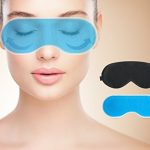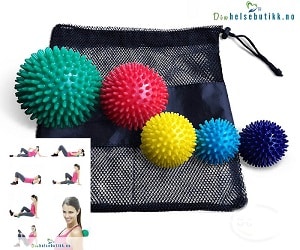
Jaw Headache (Temporomandibular headache)
Jaw headache is also called temporomandibular (TMD) headache. Jaw headache occurs due to dysfunction of the jaw muscles and joints. Bite failure, bruxism (rubbing of teeth at night), stress and reduced joint movement in the upper neck joint can be contributing causes.
This type of headache can present as a pushing, heavy and pressing like a band around the head, in the forehead or on the side of the head and jaw. It can also be special similar to the symptoms that arise from stress headaches due to the fact that both types of headaches often have an involvement of tight and sore muscles in their pain picture - but a noticeable difference between these two will be that jaw headaches cause clearly more pressure soreness over the jaw joints and jaw muscles.
Jaw Headache: When the jaw hurts you in the head
Many people know that The neck can cause headaches, but few know that the jaw can often be the main cause or a major contributing cause of headaches.
Malfunction over time or trauma (fall, violence or the like) can cause damage to the jaw joint or jaw meniscus (yes, the jaw has a meniscus in the same way as the knee). This in turn can cause the muscles and joints to become pain-sensitive and emit pain signals - which can lead to what we call jaw headaches.
Affected? Join the Facebook group «The Headache Network - Norway: Research, New Findings and Cohesion»For the latest updates on research and media writing about this disorder. Here, members can also get help and support - at all times of the day - through the exchange of their own experiences and advice.
Pain Relief: How to Relieve Jaw Headache?
To relieve jaw headaches (temporomandibular headaches), we recommend that you lie down a little (about 20-30 minutes) with a so-called «migraine mask»Over the eyes (mask that you have in the freezer and which is specially adapted to relieve migraines, neck headaches and stress headaches) - this will reduce some of the pain signals and calm down some of your tension. Click on the image or link below to read more about it.
For long-term improvement, regular use of it is recommended trigger point balls towards tense muscles in the shoulders and neck (you know you have some!) and exercise, as well as stretching. Meditation and yoga can also be useful measures to reduce mental stress in everyday life. Light, regular self-massage of the jaw muscles can also be helpful.
Read more: Pain Relieving Headache and Migraine Mask (Opens in new window)
Pain presentation: Symptoms of jaw headache (temporomandibular headache)
Symptoms and signs of jaw headache may vary, but some typical and characteristic symptoms are:
- Mild to moderate pain or pressure in the jaw, temples, up or side of the head
- The headache usually occurs later in the day
- sleep Problems
- Easily irritable
- Difficulty concentrating
- Mild sensitivity to light and sound
- Unilateral pain in the head and / or face
- Muscle soreness and discomfort - especially over large chewing muscle (Masseter)
Unlike migraines then you will not have neurological symptoms of jaw headache. Examples of nerve symptoms that may occur in migraine include muscular weakness and blurred vision. And, as mentioned, jaw headaches do not cause sound sensitivity, light sensitivity, nausea, vomiting or stomach pain in the way that migraine can do.
Epidemiology: Who gets a headache? Who is most affected?
Everyone can be affected by jaw headaches. As mentioned, this type of headache is often misdiagnosed as a stress headache - and it is estimated that 4 out of 5 people get episodes of stress headache from time to time. About 3 out of 100 have chronic, daily tension headaches - which is quite a lot if you think about it. Women are affected twice as often as men - perhaps this is linked to their ability to use larger parts of the brain (multitasking)?
Cause: Why do you get a jaw headache (temporomandibular headache)?
Jaw headache is caused by a malfunction in the jaw muscles and joints. This can be due to congenital bite defects, injuries that have occurred suddenly or over time in the meniscus or jaw joint of the jaw - or tight, tense muscles due to a high level of mental and physical stress in everyday life.
The upper part of the neck and jaw go 'hand in hand' in terms of function. This means that impaired function in the neck can lead to increased sensitivity / pressure tenderness in the jaw and vice versa. Regular self-treatment of tense muscles in the upper back and neck, e.g. with trigger point balls Used against tense muscles can also produce good results in the long run.
Increased muscle tension as a trigger for jaw headache may be due to:
- Decreased sleep quality
- Bad posture and forward head position
- Emotional and mental stress - including depression
- Anxiety
- Fatigue and fatigue
- Low iron levels
Exercises and stretching: What exercises can help with jaw headache?
Regular strength training (varied like this - not just bicep training there) of the neck, upper back and shoulders - as well as stretching, breathing exercises and yoga can all help with jaw headaches. We recommend that you get a good routine that includes daily, customized, stretching of the neck.
Try these: - 4 Stretching exercises against Stiff Neck
We also recommend these 5 specific jaw exercises.
Treatment of jaw headaches
A combined approach is important when it comes to treating jaw headache. Here you need to address the factors that cause your jaw headache to arise and work regularly to reduce unnecessary physical and mental stress.
- needle treatment: Dry needling and intramuscular acupuncture can reduce muscle pain and relieve muscle problems
- Medical treatment: It is not recommended to take painkillers over time due to the fact that all medications have side effects, but sometimes you just have to relieve the symptoms - then it is recommended that you use the least strong painkillers you can use.
- Muscle Knut Treatment: Muscular therapy can reduce muscle tension and muscle pain.
- Joint Treatment: An expert in muscles and joints (eg chiropractor) will work with both muscles and joints to give you functional improvement and symptom relief. This treatment will be adapted to each individual patient based on a thorough examination, which also takes into account the patient's overall health situation. The treatment will most likely consist of joint corrections, muscle work, ergonomic / posture counseling and other forms of treatment that are appropriate for the individual patient.
- Yoga and meditation: Yoga, mindfulness and meditation can help lower the level of mental stress in the body. A good measure for those who stress too much in everyday life.
Self-help: What can I do even for muscle and joint pain?
1. General exercise, specific exercise, stretching and activity are recommended, but stay within the pain limit. Two walks a day of 20-40 minutes make good for the whole body and sore muscles.
2. Trigger point / massage balls we strongly recommend - they come in different sizes so you can hit well even on all parts of the body. There is no better self help than this! We recommend the following (click the image below) - which is a complete set of 5 trigger point / massage balls in different sizes:
3. Training: Specific training with training tricks of various opponents (such as this complete set of 6 knits of different resistance) can help you train strength and function. Knit training often involves more specific training, which in turn can lead to more effective injury prevention and pain reduction.
4. Pain Relief - Cooling: Biofreeze is a natural product that can relieve pain by cooling the area gently. Cooling is especially recommended when the pain is very severe. When they have calmed down then heat treatment is recommended - it is therefore advisable to have both cooling and heating available.
5. Pain Relief - Heating: Warming up tight muscles can increase blood circulation and reduce pain. We recommend the following reusable hot / cold gasket (click here to read more about it) - which can be used both for cooling (can be frozen) and for heating (can be heated in the microwave).
6. Prevention and healing: Compression noise like that like this can increase blood circulation to the affected area, thereby speeding up the natural healing of injured or worn muscles and tendons.
Recommended products for pain relief in pain
Biofreeze (Cold / cryotherapy)
Read more here: - This You Should Know About Ehlers-Danlos Syndrome
Asked questions via our free Facebook query service:
- Use the comment field below if you have questions (guaranteed answer)








Leave a reply
Want to join the discussion?Feel free to Contribute!